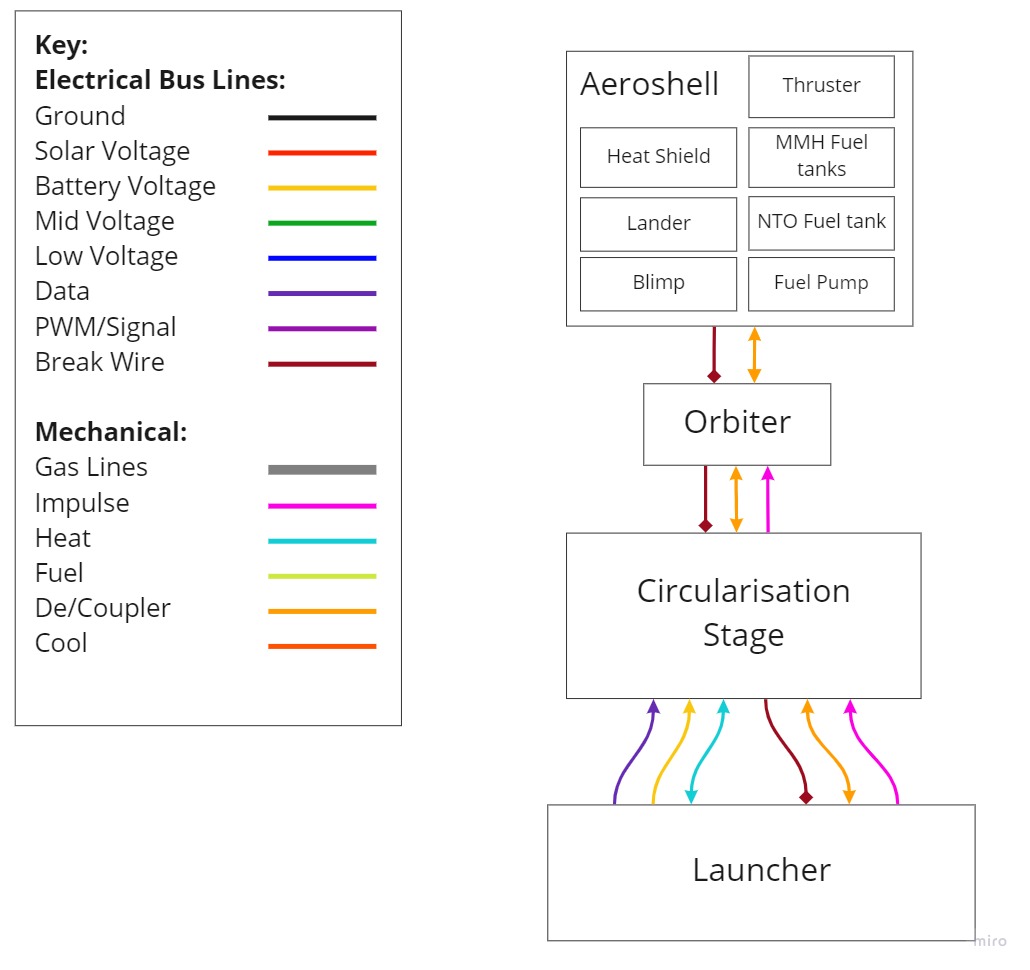Design Freeze
Mission to Venus Progress
24/02/2022
The launcher that will be used is the flacon heavy. Falcon Heavy's stage 2 will provide a prograde burn sending MTV to a venus orbit. Then the spacecraft will begin a transfer, during which the flacon stage will detach. Ideally we would send the stage into an intercept with Venus. A retrograde burn will circularise the orbit and then sensors can assess a landing site in preparation for aeroshell deployment.

The table below shows the fuel used, Fuel Mass and delta V. A Mass breakdown is also shown. Fuel for re-circularisation is shown to be the heaviest part of the mission. This allows us to have a shorter flight period, normally it would take two years to get to venus. We avoid this to allow for a more easily achievable mission duration.


 Here we can see the overarching system diagram for each system. We can see that the orbiter will be used for control, as well as taking power from the orbiter and the lander. The aeroshell will encase both the lander and the blimp as well as de-orbit thrusters.
Here we can see the overarching system diagram for each system. We can see that the orbiter will be used for control, as well as taking power from the orbiter and the lander. The aeroshell will encase both the lander and the blimp as well as de-orbit thrusters.
We can also see break wires that will be used in the decoupling of each stage. System diagrams have been developed for the lander, blimp and the orbiter.
Instrumentation, Thermal & Power System, Communications, System Diagram and CAD drawings.
Instrumentation, Power System, Thermal management System, Descent and Deployment, Stowed and Deployed CAD Drawing

Instrumentation, Thermal & Power System, Descent & Landing, System Diagram and CAD drawing.